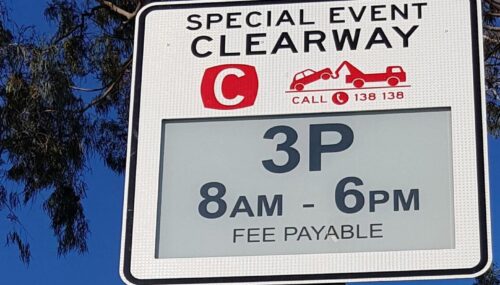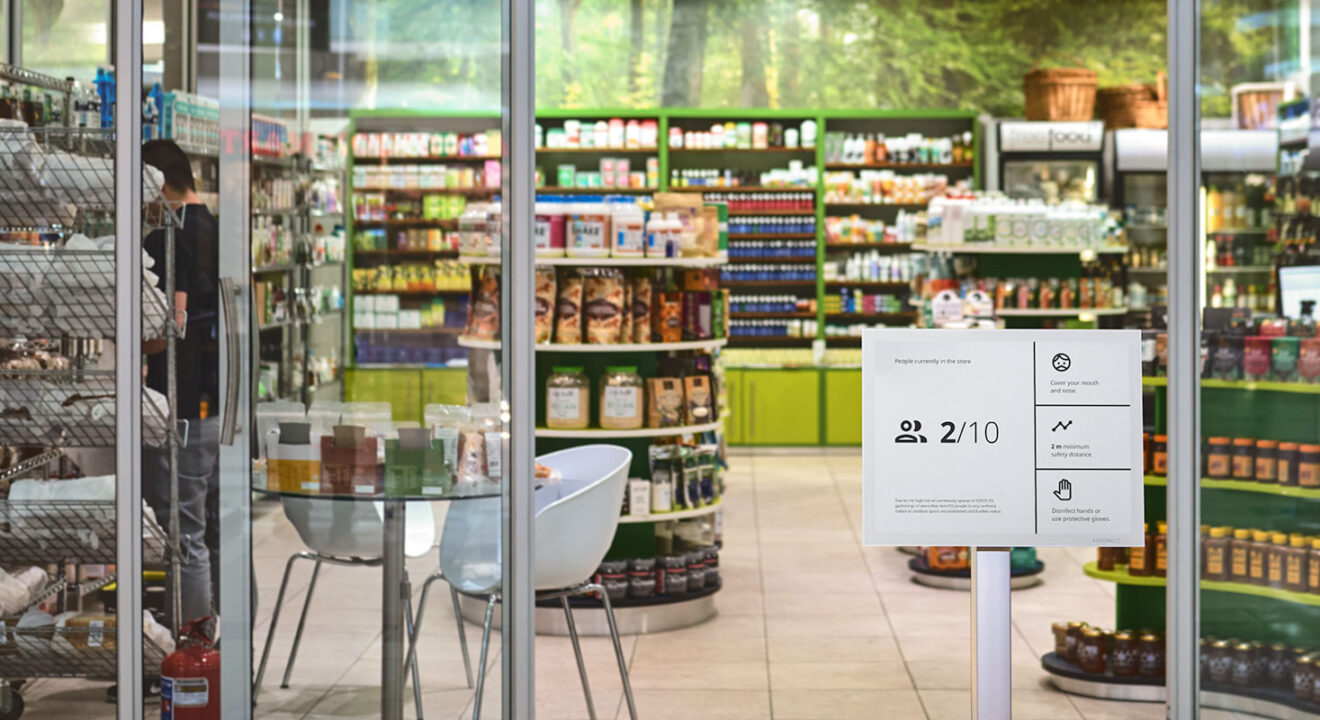

Communication in the time of coronavirus: a brave new world powered by electronic paper
Visionect, 23 Apr 2020
Changing the way we communicate
We are living in unprecedented times. With almost two million COVID-19 cases confirmed worldwide and a significant percentage of the global population in coronavirus lockdown, it seems easier than ever to feel downhearted. And yet, because even the most horrible of clouds must have a silver lining, the COVID-19 era has transformed our information sharing and communication habits, digitalizing the way we work, learn, shop, socialize and collaborate. Supported by cutting edge technology, user needs have kickstarted a rapid digital evolution, reaching even the most “analog” among us.
It seems natural to expect the same user needs to also change the way information is communicated in our physical world, on the signs and notifications all around us – especially digital ones, bridging our online and offline realities at key user points.
But how can digital signs reach locations and audiences they had struggled to reach before? How can they help propel this brave new world?
We looked into possible scenarios of how electronic paper may help.
Home offices, residential buildings and pharmacies
When it comes to working from home (during times of emergencies or not), electronic paper signs can help prevent that most dreaded of moments: interruptions of meetings and deep work sessions. Just take Joan Home, a brand new Visionect device for the home office that connects with your calendar and keeps your work focused by signalling your availability right from the study entrance, where you stuck it to the wall. No wires or bolts, no fuss.
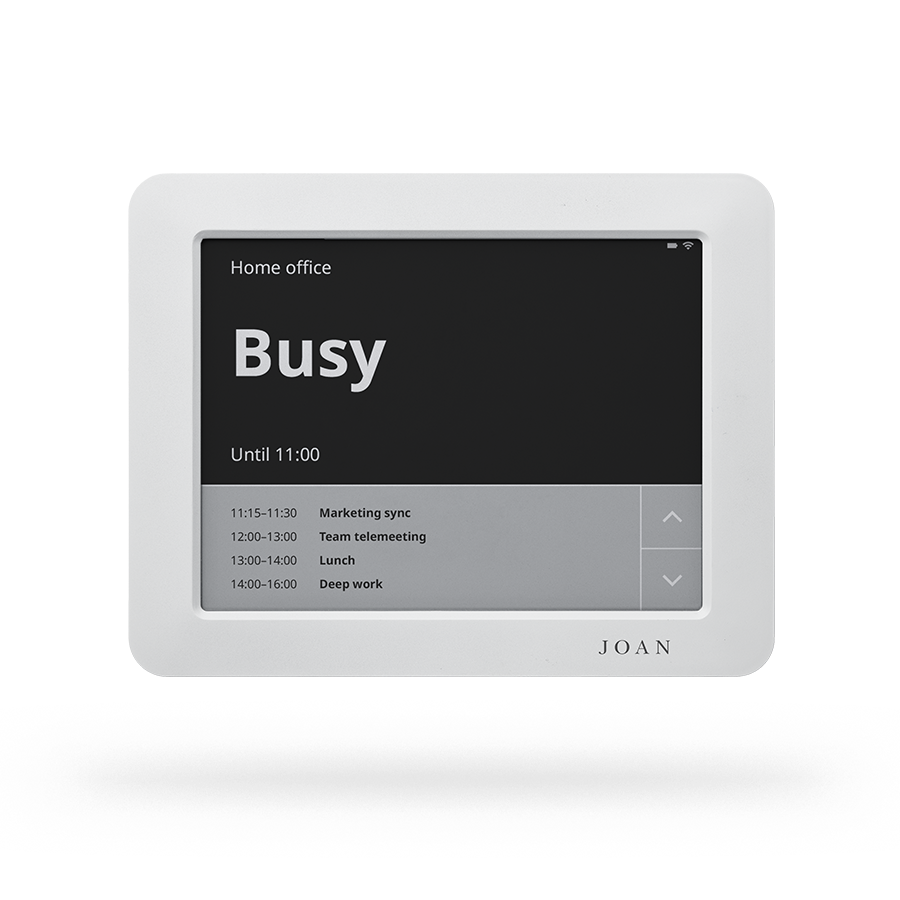
Perfect for your home office – show your availability and make sure no one disrupts your meetings and deep work sessions. Add a timetable to make it clear when your workday ends.
Or, venturing outside the apartment, the technology can be used by managers in multi-residential buildings that are, even in ordinary circumstances, beset by paper notices that need to be put up in the building. Imagine if these notice boards were replaced with displays that actually tell you what you need to know, when you need to know it, especially during a pandemic. A thin, wire-free electronic paper device such as our Place & Play would be easy to install, is always highly readable, has extreme battery autonomy, and is, most importantly, super easy to keep up to date, as it is always connected.
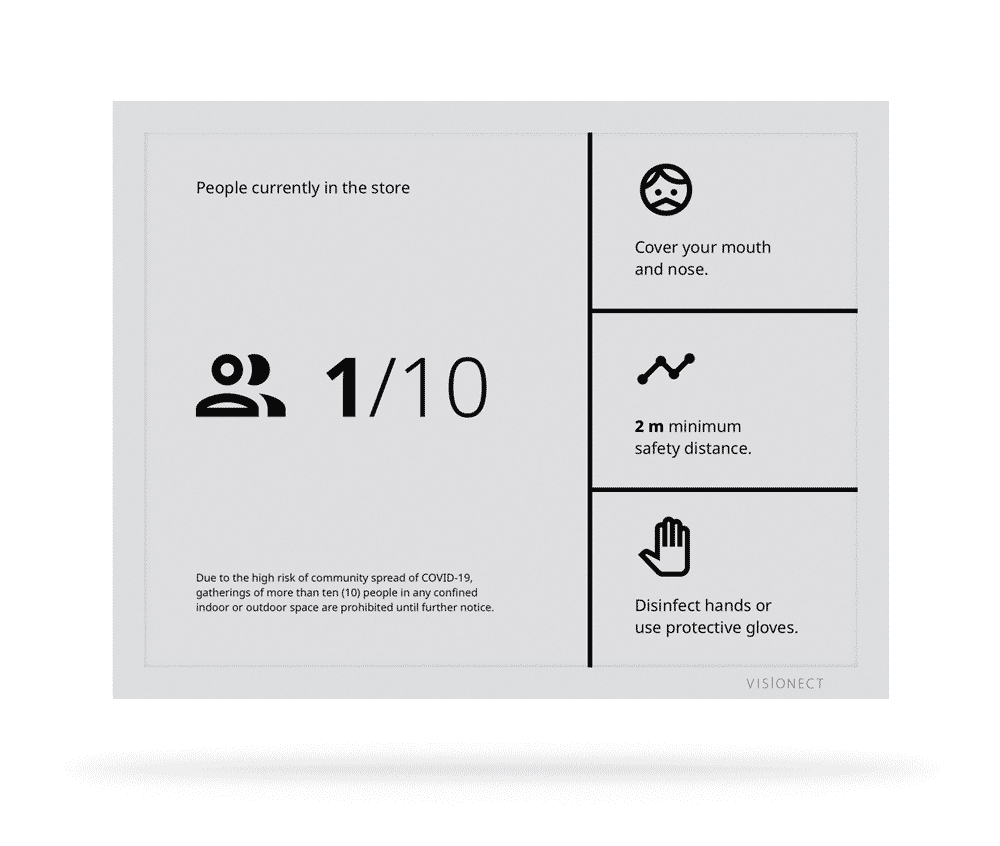
Coronavirus pandemics related content example
The same can be said for retail spaces, such as pharmacies or supermarkets, or even hospitals and healthcare institutions where the burden of real-time messages is ever greater. Instruct your visitors how to behave and move in order to minimize the chances of getting infected or inform them of the products you might or might not have in stock.
But why e-paper?
But why should e-paper be the technology to bring to life these signage solutions, so necessary in the times we live in? Three words: ultra low power, scalability and ease of update.
A famous quote from Aldous Huxley’s novel A Brave New World reads: “One believes things because one has been conditioned to believe them.” Dystopian fiction aside, the sentiment can easily be applied to digital signage. Because we are used to seeing LCD, LED and similar display technologies function in a certain way, we have been conditioned to believe all display technologies must do so. But not electronic paper.
The technology is ultra low power, 99% more energy-efficient than LCD or LED, meaning it can be installed without wires or cabling. Just a few bolts will suffice, or even a magnetic sticker. No need for expenses connected with tearing up the walls or sidewalks; no need to plan your roll-out according to power grid access. Simple to use, reliable and scalable, electronic paper – in the hands of the right technology partner – enables clients to easily roll out the signage solution that best suits their particular needs. Wherever, whenever.
The zero failure track record of Visionect-powered tech and a more than a decade of low-power signage know-how is supported by the Visionect Software Suite, in charge of all the operational aspects of running an electronic paper sign, from the message displayed on screen to battery life and connectivity. The most comprehensive e-paper driving software on the market, the Software Suite is extremely adaptable, enabling integrators to easily build their own content solutions or use pre-set content templates to quickly tackle communication in a time of crisis.
Heading outdoors: bus stops and city info points
And outdoor locations? These can benefit from electronic paper just as much as indoor spaces can – provided, of course, that the technology is powered right and designed well, so it can withstand the elements.
Again, the same rules apply: paperlike readability, simple content management and no wires. Even more, the display can easily draw its energy from the sun, reaching even the most remote outdoor spots. There it can be used to share valuable information and news, communicate standards of conduct as well as raise awareness of the risks and prevention measures during the coronavirus outbreak.
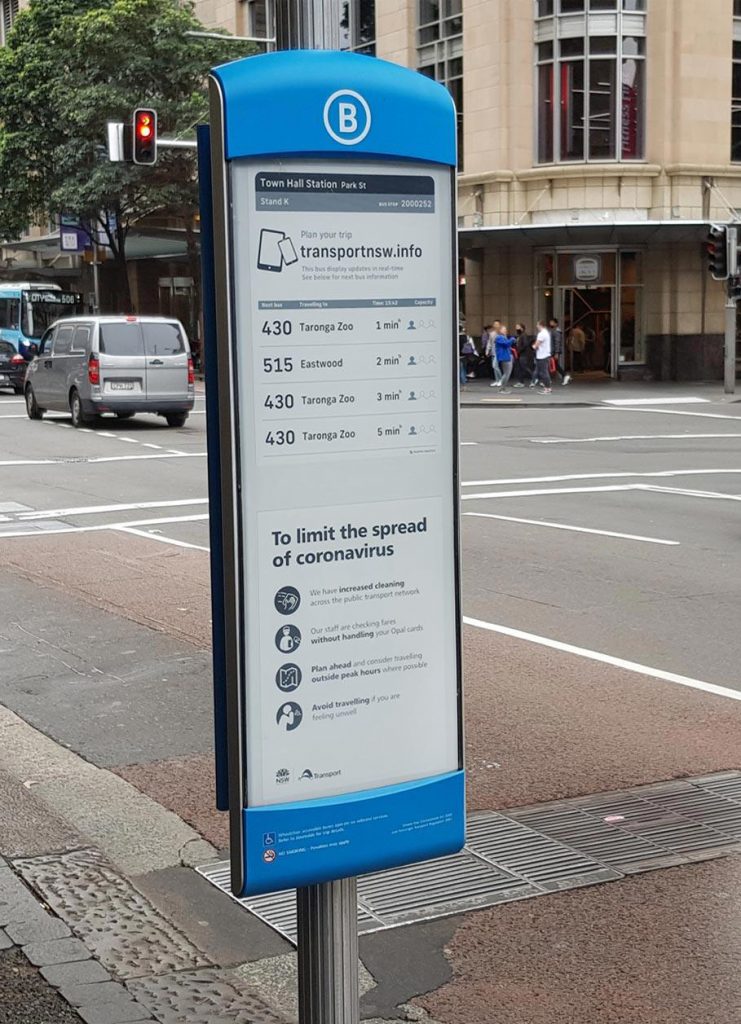
Urban Dual (by Visionect and Mercury Innovation) informing public how minimize the possibility of spreading the virus.
This is what our partners have been doing across the globe. Urban bus stops powered by Visionect are relaying timely, clear and consistent COVID-19 public messaging in Sydney, Australia, while Soofa Signs, city information points running on Visionect tech, have been busy relaying public service announcements and trusted health updates in the town of Brookline, Massachusetts. Even more, these and similar information points could be updated to feature voice control, meaning that any potential interaction between user and display such as updating the screen with a push of a button could be transferred away from the device and into the sphere of the touch- and germ-free. Recognition of simple voice commands on the device using edge AI computing in conjunction with a presence detection technology, would allow contactless device content navigation while preserving ultra low power consumption.
All with just one goal: to help people stay safe and stay informed. There could not be a nobler mission in this brave new world we have been plunged into.
Tags

